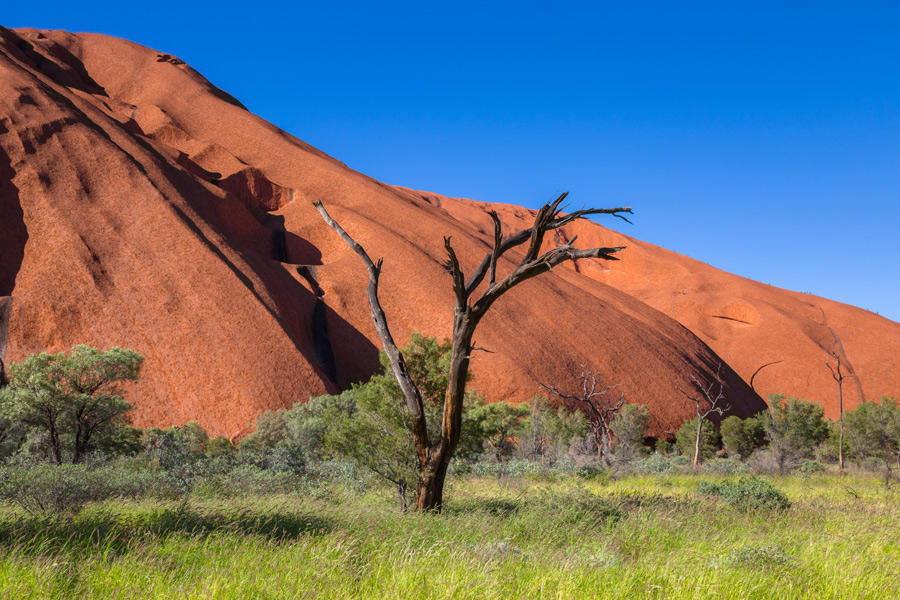[fshow photosetid=72157669722172821]
Australia’s spectacular nature attracts millions of visitors every year who come to experience some of the world’s most unique ecosystems.
From the white sandy beaches of Whitsunday and the underwater wonders of the Great Barrier Reef, to the great plains around Ayers Rock and the dramatic formations in Kakadu, Australia has some of the most diverse nature in the world and travellers are spoilt for choice.
With more than 500 national parks in Australia, it is hard to choose just one so I have compiled a list of parks that irk my interest, either because of their beauty, their history, a quirky fact or something else entirely. But there are plenty to choose from, so my suggestion is to hop on a plane and go explore on your own.
Great Barrier Reef Marine Park, Queensland
A UNESCO World Heritage site, the Great Barrier Reef is one of the most diverse underwater eco systems in the world, containing the largest collection of coral reefs, with several hundred types of coral, more than 1500 species of fish and over 4000 types of mollusc. As well as being a popular tourist attraction, the Great Barrier Reef also serves as an important scientific real-life laboratory, providing the scientific community with invaluable knowledge of the marine world.
There are plenty of ways to explore the Great Barrier Reef. Many people opt for a day trip to the reef with an early morning departure from places like Cape Tribulation, Port Douglas, Cairns, Townsville and Airlie Beach, amongst others. These trips will commonly include snorkelling excursions as well as lunch or dinner on board the boat.
For those looking for a little longer on the reef, a diving course is a great option as it will also allow you to get up close and personal with the marine life, although no touching is allowed, of course. There are several dive operators in places like Cairns and Port Douglas, offering everything from introductory one-day courses to a 3-4 day course, after the end of which you will become a certified diver. For those who already have a diving license, the Great Barrier Reef is a great place to put it to use; how about a 4-day, 3-night live aboard that will take you to the far corners of the reef away from the crowds?
Port Campbell National Park, Victoria
Port Campbell National Park is famous for its extraordinary collection of wave-sculpted rock formations and the Twelve Apostles. Despite its name, the Twelve Apostles actually comprise just eight rock formations, which are dotted along the Victoria Coastline and visible from a designated viewing platform. A ninth rock formation collapsed in 2005, showing the ever-changing nature of the coastline. Other Port Campbell National Park highlights include the Gibson Steps which will take visitors to the beach for a slightly different viewing angle, and The Grotto, a sinkhole rock formation, located on the Great Ocean Road. Once at the bottom of the stairs leading to the grotto, you can see the ocean through the arch.
Mutawintji National Park, New South Wales
Located in the New South Wales outback, Mutawintji National Park is rich in Aboriginal history, and the park bears many signs of continued use by indigenous peoples for thousands of years. The park is dominated by the Bynguano Ranges where visitors can witness the vibrant red colour of the earth that many associate with the Australian outback. The Ranges make up a 7.5 kilometre loop that is a challenging but rewarding hike by foot. If you come by car, make sure to drive the Old Coach Road, where you will see a piece of Australian history such as the ruins of the Rockholes Hotel, which was used by people travelling to these remote lands. The Mutawintji Visitor Centre is also a good place to stop by for a general introduction to the park and the sights.
Uluru-Kata Tjuta National Park, Northern Territory
The most famous feature of Uluru-Kata Tjuta National Park is the world-renowned sandstone monolith, also known as Ayers Rock, which stands 348 metres in height. Located pretty much in the middle of Australia, it is a long way from everything but definitely worth a trip. At various places on the rock, you can find inscriptions made by ancestral indigenous peoples. To this day, the rock is considered a sacred place by the Aborigines and park authorities make an effort to encourage respect for the traditional owner’s of the land.
Ayers Rock itself is the cause of some controversy. Over the years, climbing the rock has been banned, then legalised. The Aborigines used to climb the rock to get to the top for a ceremony, however more than 35 people have died (many by heart-attack) attempting the climb. Since 2005 climbing is discouraged out of respect for the indigenous peoples’ traditions however it is not forbidden.
Tips:
If the above national parks didn’t take your fancy, here are a few more:
- For ecosystems that only exist in Australia, check out the wetlands in Yalgorup National Park in Western Australia.
- For special habitats and wildlife, head to Wollemi National Park in New South Wales where the dinosaur tree, the Wollemi Pine, lives.
- For a change of scenery from the outback regions, visit Flinders Chase National Park on Kangaroo Island in South Australia, which encompasses stunning coastal landscapes, vast areas of wilderness and a great diversity of wildlife.

